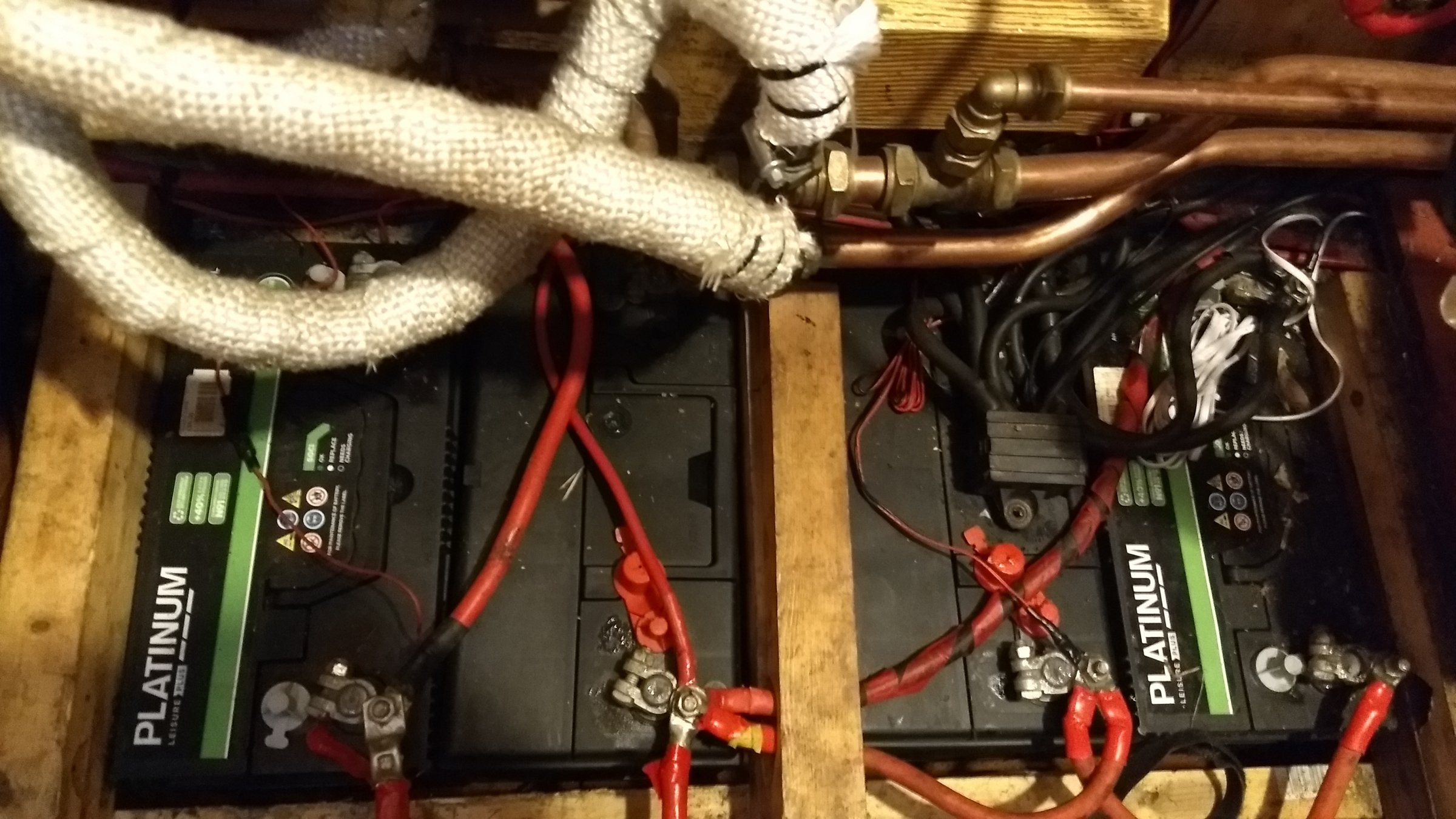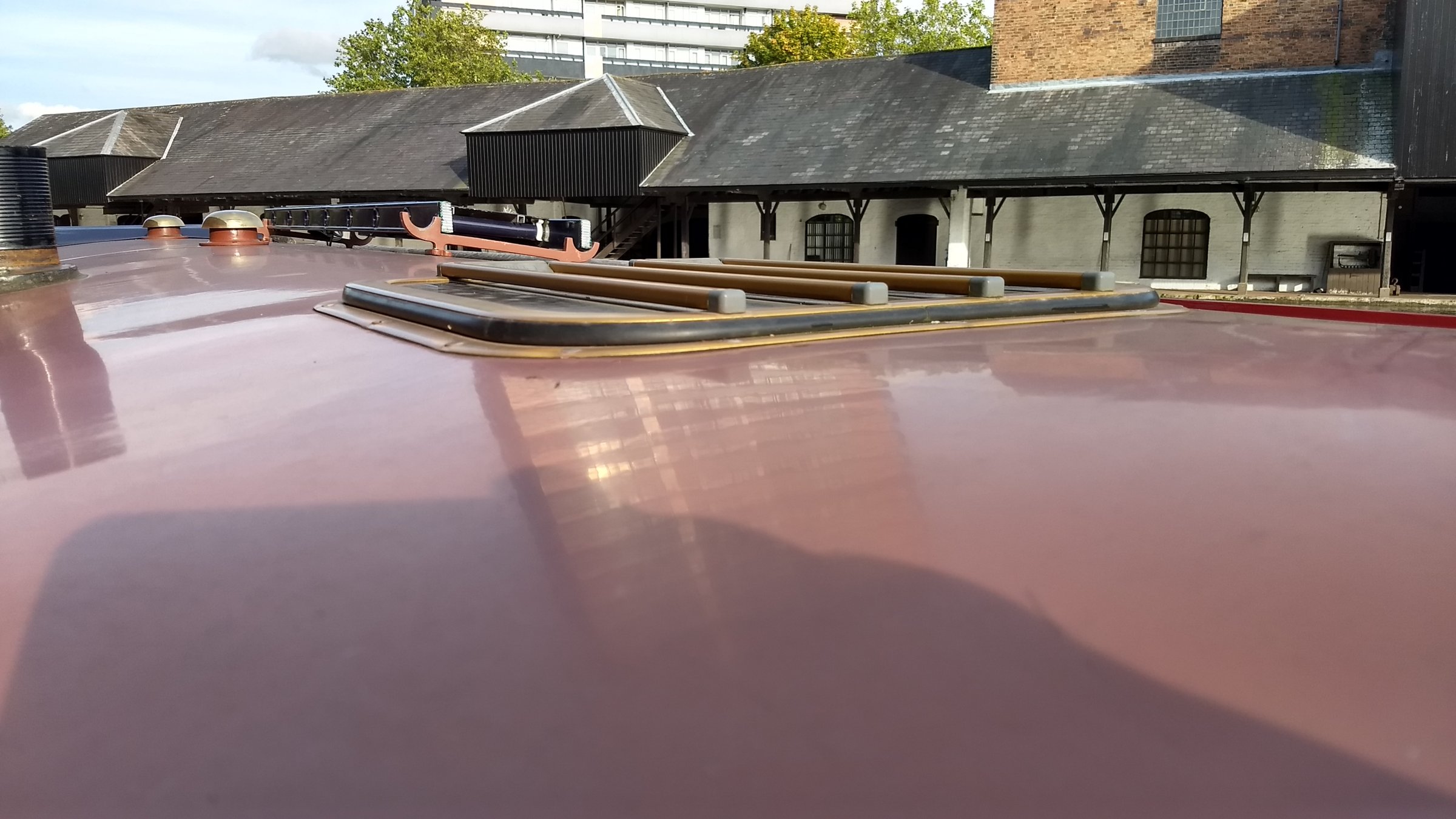-
Posts
10 -
Joined
-
Last visited
Content Type
Profiles
Forums
Events
Gallery
Blogs
Store
Posts posted by Rustonick
-
-
4 hours ago, Tony Brooks said:
So what are the two thick red wires and the thin reddish wire running upwards from different batteries then? Any of them will allow one battery to be discharged slightly more that the others. You also have thick red wires running downwards from different batteries. I accept one may be the engine battery but on that photo I can not see exactly what is going on.
We do not advise that all positives should be on one end of the battery chain and all the negative on the other for no reason. However thick the cables are the actual terminal joints will have some resistance so in your case that will allow some batteries to do more work than the others. How much is ,very much open to question and how much practical effect this will have is also open to question but when trying to diagnose potential battery problems it best to get the basics right first.
In hindsight perhaps the photo didn't help as much as I thought it would !
The red wires to the bottom of the photo are all of the battery interconnecting cables, the left hand thick red cable supplies all of the 12v circuits via a distribution board. The thick red cable on the second battery supplies the inverter - intermittent use only. The thin red wire is temp sensor cable for the charger.
The negatives are grouped from the RH end and joined to a common point - admittedly not as tidy looking as it could be.
-
56 minutes ago, WotEver said:
Not necessarily. It depends on their current capacity. If it’s down to say 150Ah then 3A is still 2%. When the charging current at 14.2V or higher has stabilised at a low figure for say 45 minutes you can then say they’re close to fully charged. Was the 3A still slowly decreasing?
Good point. Each time I checked at the end of a four hour cruise, the charging current had obviously fallen to 3A from a higher level, but what I didn't do was continue to monitor with the engine running after we'd tied up.
The engine is a three-cyl Ruston - quite noisy etc, and SWMBO likes to have it turned off asap after stopping !
-
14 minutes ago, Tony Brooks said:
Another point. Most High Rate Discharge testers ordinary boaters can get hold of are for modest car batteries so a faulty 110 Ah battery may still show good because the load is not high enough (no idea how the Sterling tester works). Nowadays they are set for CCA rather than Ah and there is no reliable correlation between the two.
That battery wiring looks decidedly sub-optimum to me so one battery may have been doing more work than the others and is now failing. Its best not to test straight off charge, even if only to prevent the battery exploding!
Try disconnecting each battery in turn overnight and measuring its voltage in the morning. From fully charged the day before each should read at least 12.7 volts. If less suspect a faulty battery - internal short circuit.
Thanks Tony. Take your point about wiring, however not sure how one battery can work harder than the others if all positives are inter-connected with 70mm2 cable and all negatives likewise.
-
1 minute ago, smileypete said:
OK, what make/brand are they?
Right - this might not be very helpful, however two are labelled Platinum Leisure Plus, and two are unlabelled. See photo :
Out of interest we've been on charge for two days at a marina, and when testing the batteries just now with the cold-cranking tester (I know it's not fully representative), all four batteries are showing as 'good', which is a bit more reassuring.
I'm wondering if our four hours cruising a day with the alternator being 'fooled' by the solar MPPT pushing the volts up, has simply resulted in not fully charging each day.
-
1 minute ago, smileypete said:
What make and type are they out of interest? At a guess they are 'sealed for life' leisures (calciums).
Yes - they're sealed for life 'maintenance free' leisure lead acid. Bothers me sometimes that I can't 'get into them' to check electrolyte levels or check charge with a hydrometer, but the manufacturers must know what they're doing !
-
Thanks Tony - that test makes a lot of sense. Do I also take it that you're suggesting that the solar panels could be 'fooling' the alternator into a lower output. If so, wouldn't it be prudent to disconnect/cover the panels whilst charging with the engine running ?
I guess an alternative is to invest in an alternator 'controller', to help overcome the higher voltage issue.
-
22 hours ago, Richard10002 said:
It could be the case with mine, (4 x proper Trojan T105), as they have held up at about 225Ah capacity for the best part of a year now.
This is interesting - I've often wondered how to assess the remaining capacity of our four lead acid batteries. In the past I've used a Sterling battery tester to check condition, but this is only really a good test of cranking ability, and doesn't tell me what capacity is 'left' in the batteries.
We've got four 110 Ah batteries, and cruise daily for around four hours. The engine-driven alternator is rated at 70 amps (max). After four hours the output to the batteries reduces to around 3 amps, telling me that they're near full charge. We have 200 W of solar through an MPPT controller too (for sunny days !). Overnight we use around 50 Ah (according to our Victron BMV unit). When the batteries were new, the voltage would fall to say 12.4 v overnight, now after some 100 discharge cycles (100 days), the voltage by the morning falls to around 11.8v, which I know is not helping.
How do I test to ascertain the remaining capacity of the batteries ?
-
5 hours ago, Robbo said:
This is interesting to know if they can cope with a slight curve as mine will need to be pulled down roughly the same. Was the hatch a actual Houdini make or a copy?
I always thing it looks like an afterthought design when on a plinth like that, something I'm trying to avoid!
Hi Robbie. The Houdini hatch was a genuine item bought direct from Houdini. I've just measured again and the sides have definitely been pulled 5mm lower. The yard that fitted for me during repaint said it wouldn't work, but agreed to try. It worked a treat.
-
We fitted a new Houdini to our curved roof whilst the boat was being repainted around three years ago. The sides of the frame had to be 'pulled down' about 5mm each side.
The seal on the hinged lid is thick enough to compress and maintain a good seal. It's opened regularly, but has never leaked whilst shut.
On the inside we have a simple removable glazed panel set in a timber frame - no condensation.





PRM gearbox fixer - stoke?
in Boat Building & Maintenance
Posted
Try Mark Edwards (M & L Canal Services) - 07970 384047. He's around 40 mins from Stoke.